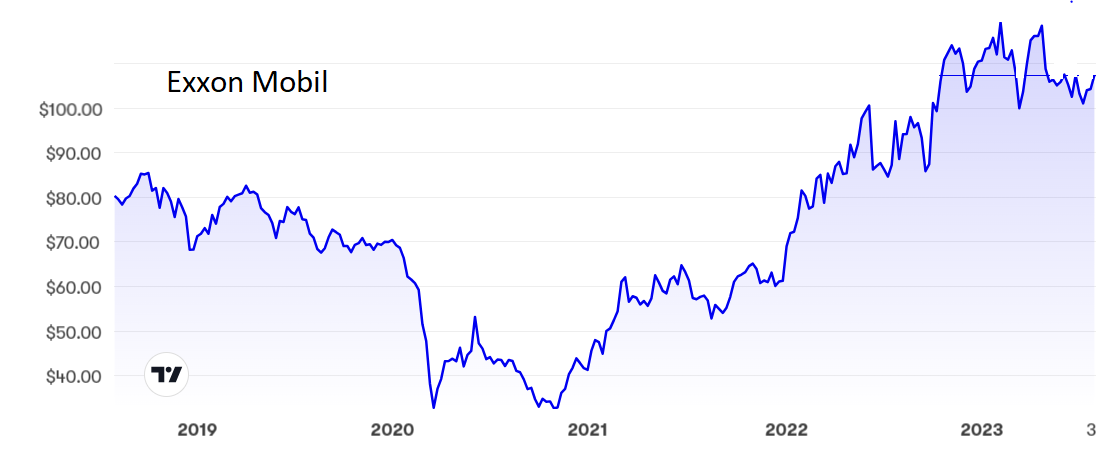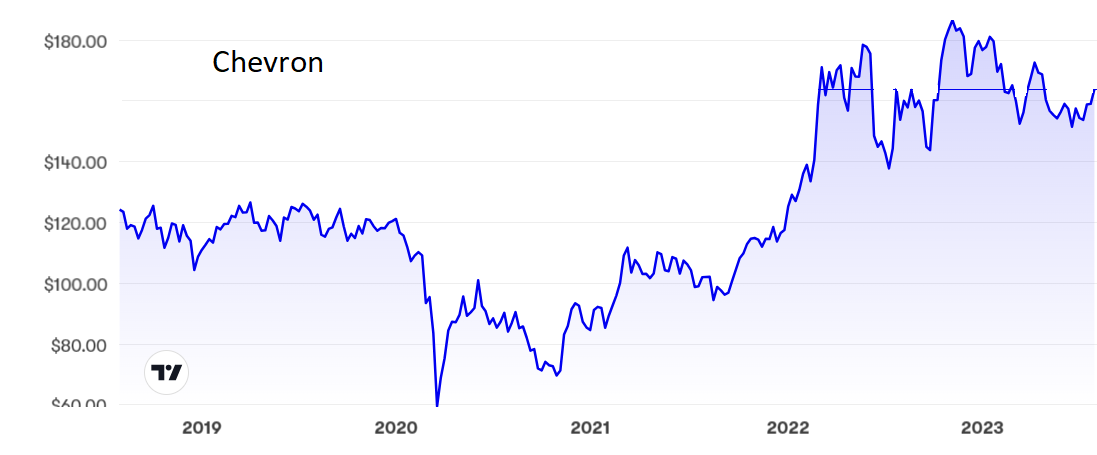Keep hold of these shares for dividends and growth
2nd August 2023 10:49
by Rodney Hobson from interactive investor
Profits have returned to more normal levels after last year’s blockbuster results, so what should you do with shares in these industry giants? Overseas investing expert Rodney Hobson warns against writing them off.

What goes up does not always come down - but try telling that to shareholders in oil companies that were riding high during fuel shortages but are suffering now from falling oil prices. Profits at major oil companies in the United States have halved in the second quarter compared with the record levels seen last year.
- Invest with ii: Most-traded US Stocks | Buy International Shares | Interactive investor Offers
Exxon Mobil (NYSE:XOM) fell short of analysts’ expectations as it reported net income down 56% to $7.88 billion (£6.1 billion) in the three months to 30 June on a 29% drop in revenue to $82.9 billion, with the blame laid squarely on lower gas prices and tighter refining margins.

Source: interactive investor. Past performance is not a guide to future performance.
Chevron Corp (NYSE:CVX) fared only slightly better, with profits down 48% to just over $6 billion and revenue 28% lower at $47.2 billion. It cited similar pressures to those highlighted by Exxon. They are not alone: Shell (LSE:SHEL) had already set the scene with a cautionary trading update, as reviewed by Keith Bowman on 7 July.

Source: interactive investor. Past performance is not a guide to future performance.
Oil prices rose sharply last year in the wake of the Russian invasion of Ukraine, with the situation worsened by the determination of the Opec+ oil producing cartel to hold down production. The price of crude oil hit a five-year peak at $115 a barrel at the end of May last year. It is now down to $80 after hitting a low of $65 earlier this year.
A major factor has been fears of a slowdown in Western economies rather than the climate-related backlash against fossil fuels. Rising interest rates in the US, Britain and Europe were all expected to affect economic growth as much as to fulfil the primary purpose of curbing inflation. However, with inflation finally falling in all three places there are now genuine hopes that interest rates will peak at lower levels than expected.
In addition, the American economy is holding up remarkably well with gross domestic product up at an annualised rate of 2.4% in the second quarter compared with 2% in the first three months of 2023. The labour market continues to expand more rapidly than expected and the Federal Reserve Bank is no longer expecting a recession. With inflation down to 3%, within reach of the 2% target, the Fed is likely to pause its long series of interest rate rises until it sees how the land lies.
- How Nasdaq-100 ‘special rebalance’ has impacted the big seven tech stocks
- BP dividend increase is double expectations
- Why the outlook for dividends in 2023 has brightened
Exxon has spent heavily on improving production techniques and can claim that its performance in the latest quarter was much better than in similar circumstances five years ago.
Exxon shares have twice baulked at a $120 ceiling this year but there does seem to be a solid floor at $100. They currently stand at $106, where the price/earnings ratio is an undemanding 8.3 and the yield is reassuring at 3.5%. Chevron’s share chart follows a similar pattern, with a peak just below $190 and a potential floor at $150. At the current $162 the p/e is 10, a little higher than for Exxon but still not demanding, and the yield is slightly better at 3.7% thanks to a dividend increase after the first quarter.
Hobson’s choice: I recommended Exxon and Chevron in February at slightly higher than current levels and although the share price performance has been a bit disappointing, investors have had the comfort of two quarterly dividends since. Although the overall picture is now somewhat cloudier, those who bought earlier should hold on. Fossil fuels are far from finished and oil prices will recover as Western economies bottom out by year end.
Shorter-term investors may prefer to hold off to buy Exxon below $100 and Chevron below $150 but there is a good chance those levels will not be seen again. Similarly it would be reasonable to take profits at $120 and $190 respectively.
Rodney Hobson is a freelance contributor and not a direct employee of interactive investor.
These articles are provided for information purposes only. Occasionally, an opinion about whether to buy or sell a specific investment may be provided by third parties. The content is not intended to be a personal recommendation to buy or sell any financial instrument or product, or to adopt any investment strategy as it is not provided based on an assessment of your investing knowledge and experience, your financial situation or your investment objectives. The value of your investments, and the income derived from them, may go down as well as up. You may not get back all the money that you invest. The investments referred to in this article may not be suitable for all investors, and if in doubt, an investor should seek advice from a qualified investment adviser.
Full performance can be found on the company or index summary page on the interactive investor website. Simply click on the company's or index name highlighted in the article.
Disclosure
We use a combination of fundamental and technical analysis in forming our view as to the valuation and prospects of an investment. Where relevant we have set out those particular matters we think are important in the above article, but further detail can be found here.
Please note that our article on this investment should not be considered to be a regular publication.
Details of all recommendations issued by ii during the previous 12-month period can be found here.
ii adheres to a strict code of conduct. Contributors may hold shares or have other interests in companies included in these portfolios, which could create a conflict of interests. Contributors intending to write about any financial instruments in which they have an interest are required to disclose such interest to ii and in the article itself. ii will at all times consider whether such interest impairs the objectivity of the recommendation.
In addition, individuals involved in the production of investment articles are subject to a personal account dealing restriction, which prevents them from placing a transaction in the specified instrument(s) for a period before and for five working days after such publication. This is to avoid personal interests conflicting with the interests of the recipients of those investment articles.